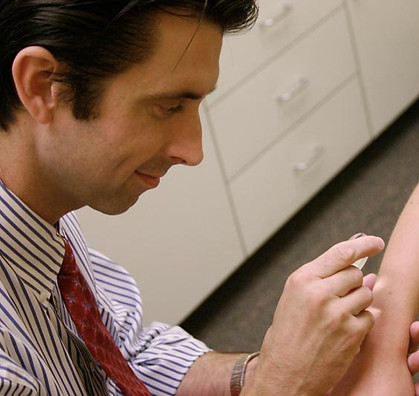
General Dermatology

Boone Dermatology offers comprehensive diagnosis, treatment and care of all skin conditions including surgery and cosmetic treatments.
We currently accept all patients with general dermatologic needs, including but not limited to:
-
Skin Exams
-
Skin Cancer Treatment
-
Acne
-
Eczema
-
Psoriasis
-
Hair Disorders
-
Nail Disorders
-
Hyperhidrosis

For more information, The American Academy of Dermatology's Public Center has a wealth of detailed information on these dermatologic conditions plus many more.
CARE AFTER SKIN SURGERY
-
Surgery sites will heal slightly faster if they remain covered with a Band-Aid for the first 48 hours. Change the Band-Aid twice daily and apply an antibiotic ointment, either Polysporin (available without a prescription) or Bactroban to the surgery site. However, if you have many surgery sites, this may not be practical and it will be easier to simply leave them open to the air.
-
You may wash gently around the surgery site with mild soap and water but try not to disturb the crust.
-
The crust or scab which forms after treatment should be allowed to fall off on its own and should never be picked off.
-
If the surgery site becomes red, irritated, or oozes, this may indicate the presence of a superficial infection and you should call our office.
-
After the crust has fallen off, the surgery site may be pinkish-red. This usually fades away over the next few weeks or months.
-
If the surgery site forms a hard, reddish raised bump after it has healed, this usually indicates the presence of extra scar tissue. This usually slowly fades away although it can sometimes take as long as a year or two. As an alternative, a medication can be injected into the extra scar tissue which will usually make it flatten out within a few weeks. Please call the office if you should develop any excessive scar tissue and would like to have it injected.
CARE AFTER LIQUID NITROGEN CRYOSURGERY
-
At times a blister may form following liquid nitrogen treatment. The blister may be filled with clear fluid or a “blood blister” may form. Do not be frightened. This is a normal response to therapy and after a few days the blister will dry up and crust over.
-
If the blister causes pain because of significant tension with fluid, you may cleanse a needle with alcohol and puncture the blister. You may make several pin holes. Do not un-roof an entire blister.
-
A scab or crust will form at the treatment site. These may be left open to the air or may be covered with a Band-Aid. These areas may be washed gently with soap and water daily. Do not pick at the crust. Allow them to fall off by themselves (1 to 2 weeks following treatment on the face but can take as long as 4 to 6 weeks on the back and legs).
-
A second treatment is sometimes necessary, especially with larger warts or keratoses. Please call the office for a return appointment if needed.
-
After the crusts fall off, the treatment site may be lighter, darker, or redder than the surrounding normal skin. This usually gradually fades away although it can sometimes take a number of months.








